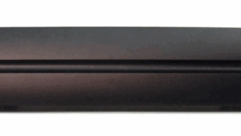
Fraunhofer, the German company that helped develop the H.264, H.265 and MP3 encoding formats, has unveiled a new video encoding standard for 4K and 8K streaming. Called H.266/Versatile Video Coding (VVC), it reduces data requirements by around 50 percent compared to H.265 HEVC (high-efficiency video coding). It’s positioned as a way to reduce bottlenecks without losing image quality
Fraunhofer collaborated on the codec with Apple, Ericsson, Intel, Huawei, Microsoft, Qualcomm and Sony. It will be licensed by the Media Coding Industry Forum (MC-IF), a group with 34 major member companies, whiich will be charged with keeping the peace.
Because of the quantum leap in coding efficiency offered by H.266/VVC, the use of video will increase further worldwide. Moreover, the increased versatility of H.266/VVC makes its use more attractive for a broader range of applications related to the transmission and storage of video.
Fraunhofer said that if a 90-minute, H.265/HEVC-encoded movie is about 10GB, it would only be 5GB for the same quality when encoded with the new codec. “Because H.266/VVC was developed with ultra-high-resolution video content in mind, the new standard is particularly beneficial when streaming 4K or 8K videos on a flat screen TV,” Fraunhofer said. At the same time, it will support all formats from 480p on up.
There’s no software standard yet for VCC encoding and decoding, though Fraunhofer said it will deliver one this fall. The company added that “the new chips required for the use of H.266/VVC, such as those in mobile devices, are currently being designed.”










